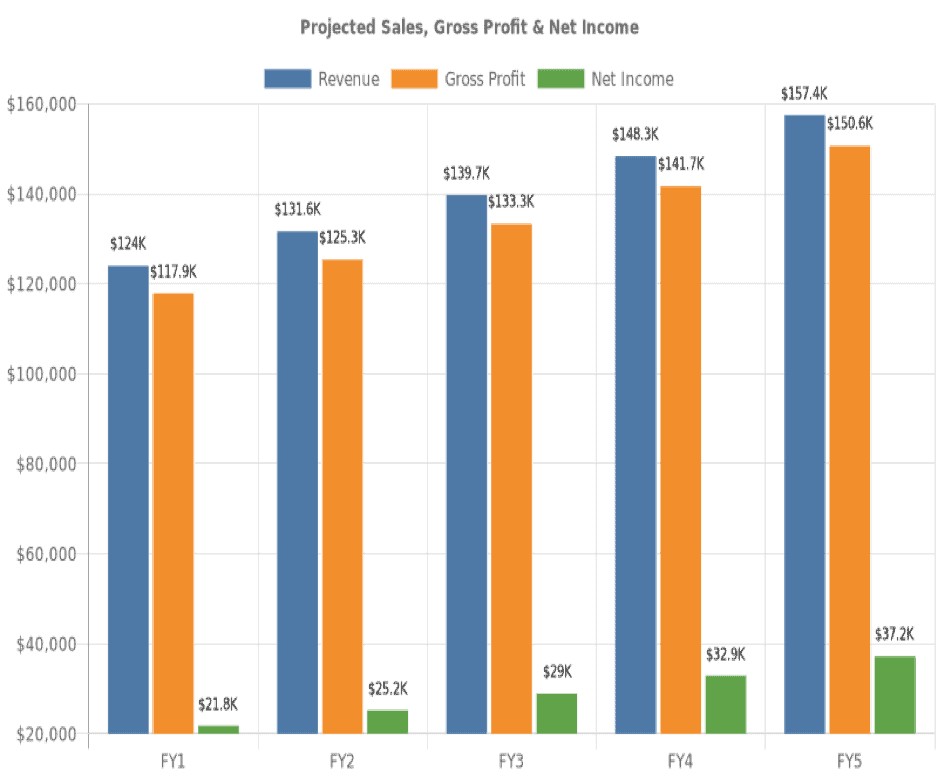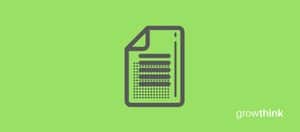Over the past 20+ years, we have helped over 5,000 entrepreneurs create business plans to start and grow their cleaning services businesses. On this page, we will first give you some background information with regards to the importance of business planning. We will then go through a cleaning services business plan template step-by-step so you can create your plan today.
What is a Cleaning Service Business Plan?
A business plan provides a snapshot of your cleaning services business as it stands today, and lays out your growth plan for the next five years. It explains your business goals and your strategy for reaching them. It also includes market research to support your plans.
Why You Need a Business Plan for a Cleaning Service
If you’re looking to start a cleaning services business or grow your existing cleaning services business you need a business plan. A business plan will help you raise funding, if needed, and plan out the growth of your cleaning services business in order to improve your chances of success. Your cleaning services business plan is a living document that should be updated annually as your company grows and changes.
Source of Funding for Cleaning Services Businesses
With regards to funding, the main sources of funding for a cleaning services business are personal savings, credit cards, bank loans and angel investors. With regards to bank loans, banks will want to review your business plan and gain confidence that you will be able to repay your loan and interest. To acquire this confidence, the loan officer will not only want to confirm that your financials are reasonable. But they will want to see a professional plan. Such a plan will give them the confidence that you can successfully and professionally operate a business.
Angel investors are wealthy individuals who will write you a check. They will either take equity in return for their funding, or, like a bank, they will give you a loan.
Finish Your Business Plan Today!
If you’d like to quickly and easily complete your business plan, download Growthink’s Ultimate Cleaning Business Plan Template and complete your plan and financial model in hours.
Cleaning Services Business Plan Template
Your business plan should include 10 sections as follows:
Executive Summary
Your executive summary provides an introduction to your business plan, but it is normally the last section you write because it provides a summary of each key section of your plan.
The goal of your Executive Summary is to quickly engage the reader. Explain to them the type of cleaning services business you are operating and the status; for example, are you a startup, do you have a cleaning services business that you would like to grow, or are you operating a chain of cleaning services businesses.
Next, provide an overview of each of the subsequent sections of your plan. For example, give a brief overview of the cleaning services business industry. Discuss the type of cleaning services business you are operating. Detail your direct competitors. Give an overview of your target customers. Provide a snapshot of your marketing plan. Identify the key members of your team. And offer an overview of your financial plan.
Company Analysis
In your company analysis, you will detail the type of cleaning services business you are operating.
For example, you might operate one of the following types:
- Residential: this type of cleaning services business offers general cleaning services to households. In addition to cleaning services for inside the home, this type of business may also offer exterior cleaning services.
- Janitorial: this type of cleaning services business serves both residential and commercial clients. These businesses may specialize in a particular niche, such as medical facilities.
- Carpet Cleaning: this type of cleaning services business clean rugs, carpets and upholstery for residential and commercial clients. Companies in the industry also provide a range of other services including dyeing used rugs, damage restoration services, ventilation duct cleaning and other cleaning services.
In addition to explaining the type of cleaning services business you operate, the Company Analysis section of your business plan needs to provide background on the business.
Include answers to question such as:
- When and why did you start the business?
- What milestones have you achieved to date? Milestones could include sales goals you’ve reached, new store openings, etc.
- Your legal structure. Are you incorporated as an S-Corp? An LLC? A sole proprietorship? Explain your legal structure here.
Industry Analysis
In your industry analysis, you need to provide an overview of the cleaning services business.
While this may seem unnecessary, it serves multiple purposes.
First, researching the cleaning services business industry educates you. It helps you understand the market in which you are operating.
Secondly, market research can improve your strategy particularly if your research identifies market trends. For example, if there was a trend towards “green” cleaning services, it would be helpful to ensure your plan calls for eco-friendly product and service options.
The third reason for market research is to prove to readers that you are an expert in your industry. By conducting the research and presenting it in your plan, you achieve just that.
The following questions should be answered in the industry analysis section of your cleaning services business plan:
- How big is the cleaning services business (in dollars)?
- Is the market declining or increasing?
- Who are the key competitors in the market?
- Who are the key suppliers in the market?
- What trends are affecting the industry?
- What is the industry’s growth forecast over the next 5 – 10 years?
- What is the relevant market size? That is, how big is the potential market for your cleaning services business. You can extrapolate such a figure by assessing the size of the market in the entire country and then applying that figure to your local population.
Customer Analysis
The customer analysis section of your cleaning services business plan must detail the customers you serve and/or expect to serve.
The following are examples of customer segments: families, schools, apartment complexes, etc.
As you can imagine, the customer segment(s) you choose will have a great impact on the type of cleaning services business you operate. Clearly residential customers would want different pricing and product options, and would respond to different marketing promotions than hospitals.
Try to break out your target customers in terms of their demographic and psychographic profiles. With regards to demographics, include a discussion of the ages, genders, locations and income levels of the customers you seek to serve. Because most cleaning services businesses primarily serve customers living in their same city or town, such demographic information is easy to find on government websites.
Psychographic profiles explain the wants and needs of your target customers. The more you can understand and define these needs, the better you will do in attracting and retaining your customers.
Finish Your Cleaning Business Plan in 1 Day!
Don’t you wish there was a faster, easier way to finish your business plan?
With Growthink’s Ultimate Cleaning Business Plan Template you can finish your plan in just 8 hours or less!
Click here to finish your Cleaning business plan today.
Competitive Analysis
Your competitive analysis should identify the indirect and direct competitors your business faces and then focus on the latter.
Direct competitors are other cleaning services businesses.
Indirect competitors are other options that customers have to purchase from that aren’t direct competitors. This includes businesses hiring internal janitorial staff, and people doing their own cleaning at home. You need to mention such competition to show you understand that not everyone who needs cleaning services will engage a cleaning business.
With regards to direct competition, you want to detail the other cleaning services businesses with which you compete. Most likely, your direct competitors will be cleaning services businesses located very close to your location.
For each such competitor, provide an overview of their businesses and document their strengths and weaknesses. Unless you once worked at your competitors’ businesses, it will be impossible to know everything about them. But you should be able to find out key things about them such as:
- What types of customers do they serve?
- What products and services do they offer?
- What is their pricing (premium, low, etc.)?
- What are they good at?
- What are their weaknesses?
With regards to the last two questions, think about your answers from the customers’ perspective. And don’t be afraid to stand outside your competitors’ locations and ask customers as they leave what they like most and least about them.
The final part of your competitive analysis section is to document your areas of competitive advantage. For example:
- Will you provide superior cleaning services?
- Will you provide cleaning services that your competitors don’t offer?
- Will you make it easier or faster for customers to book your services?
- Will you provide better customer service?
- Will you offer better pricing?
Think about ways you will outperform your competition and document them in this section of your plan.
Marketing Plan
Traditionally, a marketing plan includes the four P’s: Product, Price, Place, and Promotion. For a cleaning services business plan, your marketing plan should include the following:
Product: in the product section you should reiterate the type of cleaning services business that you documented in your Company Analysis. Then, detail the specific services you will be offering. For example, in addition to standard residential cleaning services, will you offer damage restoration services?
Price: Document the prices you will offer and how they compare to your competitors. Essentially in the product and price sub-sections of your marketing plan, you are presenting the services you offer and their prices.
Place: Place refers to the location of your cleaning services business. Document your location and mention how the location will impact your success. Discuss how your location might provide a steady stream of customers.
Promotions: the final part of your cleaning services business marketing plan is the promotions section. Here you will document how you will drive customers to your location(s). The following are some promotional methods you might consider:
- Advertising in local papers and magazines
- Reaching out to local bloggers and websites
- Social media advertising
- Flyers
- Local radio advertising
- Pay per click advertising
- Banner ads at local venues
Client Retention
Your cleaning service business plan should discuss not just how you will find customers in the first place, but how you’ll hold on to them and discourage them from switching to another firm. After all, it should be much less expensive to keep a customer than to market and sell to a new one. Some methods of retaining customers involve creating the perception of switching costs; that is, that they will lose money and time when switching to a new cleaning service. Others involve fine-tuning your customer service skills into a customer service system around retention.
Loyalty Program
Creating a loyalty program is a positive way of creating switching costs for your customers. For example, by offering a free cleaning after every 10 cleanings, or some specialty service when certain milestones are missed, your customers will worry about losing the value they have saved up that is only of use if they stay with your company.
Premium Customer Levels
Another related retention strategy is to reward the frequency of customer cleanings. For example, customers who order cleanings once a week and keep that up, can be offered entry into your “premium customer group”, marketed with a branded name to build interest. You can offer members of this group more leeway to schedule last minute cleanings, reschedule or cancel, additional perks, or priority customer service of some other kind. Clients who are almost at the point of qualifying may push themselves to reach that point in order to get these valuable perks.
Tracking Retention
Simply by tracking the numbers and percentages involved in your customer retention can yield valuable information about what you’re doing right or wrong and how successful new initiatives are over time. Statistics to track may include customer complaints, the average speed of complaint resolution, the percentage of customers in a given month who were using your services last month, 3 months ago, 6 months ago, a year ago, etc, and so on. When your staff is aware of these statistics and is given targets to work towards, the message that customer service and retention is a priority is heard loud and clear.
Finish Your Business Plan Today!
If you’d like to quickly and easily complete your business plan, download Growthink’s Ultimate Cleaning Business Plan Template and complete your plan and financial model in hours.
Operations Plan
While the earlier sections of your business plan explained your goals, your operations plan describes how you will meet them. Your operations plan should have two distinct sections as follows.
Everyday short-term processes include all of the tasks involved in running your cleaning services business such as serving customers, procuring supplies, etc.
Long-term goals are the milestones you hope to achieve. These could include the dates when you expect to serve your 100th customer, or when you hope to reach $X in sales. It could also be when you expect to hire your Xth employee or launch in a new city.
Management Team
To demonstrate your cleaning services business’s ability to succeed as a business, a strong management team is essential. Highlight your key players’ backgrounds, emphasizing those skills and experiences that prove their ability to grow a company.
Ideally you and/or your team members have direct experience in the cleaning services business. If so, highlight this experience and expertise. But also highlight any experience that you think will help your business succeed.
If your team is lacking, consider assembling an advisory board. An advisory board would include 2 to 8 individuals who would act like mentors to your business. They would help answer questions and provide strategic guidance. If needed, look for advisory board members with experience in cleaning services businesses and/or successfully running small businesses.
Financial Plan
Your financial plan should include your 5-year financial statement broken out both monthly or quarterly for the first year and then annually. Your financial statements include your income statement, balance sheet and cash flow statements.
Projected Sales, Gross Profit & Net Income

Income Statement: an income statement is more commonly called a Profit and Loss statement or P&L. It shows your revenues and then subtracts your costs to show whether you turned a profit or not.
In developing your income statement, you need to devise assumptions. For example, will you serve 20 customers per week or 50? And will sales grow by 2% or 10% per year? As you can imagine, your choice of assumptions will greatly impact the financial forecasts for your business. As much as possible, conduct research to try to root your assumptions in reality.
Example 5 Year Annual Income Statement
| FY 1 | FY 2 | FY 3 | FY 4 | FY 5 | ||
|---|---|---|---|---|---|---|
| Revenues | ||||||
| Revenues | $123,964 | $131,600 | $139,707 | $148,313 | $157,449 | |
| Total Revenues | $123,964 | $131,600 | $139,707 | $148,313 | $157,449 | |
| Direct Costs | ||||||
| Direct Costs | $6,067 | $6,251 | $6,441 | $6,637 | $6,838 | |
| Total Direct Costs | $6,067 | $6,251 | $6,441 | $6,637 | $6,838 | |
| GROSS PROFIT | $117,896 | $125,348 | $133,265 | $141,676 | $150,610 | |
| GROSS PROFIT % | 95.1% | 95.2% | 95.4% | 95.5% | 95.7% | |
| Other Expenses | ||||||
| Salaries | $58,251 | $60,018 | $61,839 | $63,715 | $65,648 | |
| Marketing Expenses | $0 | $0 | $0 | $0 | $0 | |
| Rent/Utility Expenses | $0 | $0 | $0 | $0 | $0 | |
| Other Expenses | $12,135 | $12,503 | $12,883 | $13,274 | $13,676 | |
| Total Other Expenses | $70,386 | $72,522 | $74,722 | $76,989 | $79,325 | |
| EBITDA | $47,510 | $52,826 | $58,543 | $64,686 | $71,285 | |
| Depreciation | $6,000 | $6,000 | $6,000 | $6,000 | $6,000 | |
| Amortization | $0 | $0 | $0 | $0 | $0 | |
| EBIT | $41,510 | $46,826 | $52,543 | $58,686 | $65,285 | |
| Interest Expense | $8,000 | $8,000 | $8,000 | $8,000 | $8,000 | |
| PRETAX INCOME | $33,510 | $38,826 | $44,543 | $50,686 | $57,285 | |
| Net Operating Loss | $0 | $0 | $0 | $0 | $0 | |
| Use of Net Operating Loss | $0 | $0 | $0 | $0 | $0 | |
| Taxable Income | $33,510 | $38,826 | $44,543 | $50,686 | $57,285 | |
| Income Tax Expense | $11,728 | $13,589 | $15,590 | $17,740 | $20,049 | |
| NET INCOME | $21,781 | $25,237 | $28,952 | $32,946 | $37,235 | |
| Net Profit Margin (%) | 17.6% | 19.2% | 20.7% | 22.2% | 23.6% |
Balance Sheets: While balance sheets include much information, to simplify them to the key items you need to know about, balance sheets show your assets and liabilities. For instance, if you spend $50,000 on building out your cleaning services business, that will not give you immediate profits. Rather it is an asset that will hopefully help you generate profits for years to come. Likewise, if a bank writes you a check for $50.000, you don’t need to pay it back immediately. Rather, that is a liability you will pay back over time.
Example 5 Year Annual Balance Sheet
| FY 1 | FY 2 | FY 3 | FY 4 | FY 5 | ||
|---|---|---|---|---|---|---|
| ASSETS | ||||||
| Cash | $73,661 | $104,443 | $138,906 | $177,527 | $140,212 | |
| Other Current Assets | $10,563 | $11,213 | $11,904 | $12,359 | $13,120 | |
| Total Current Assets | $84,224 | $115,657 | $150,811 | $189,886 | $153,333 | |
| Intangible Assets | $0 | $0 | $0 | $0 | $0 | |
| Acc Amortization | $0 | $0 | $0 | $0 | $0 | |
| Net Intangibles | $0 | $0 | $0 | $0 | $0 | |
| Fixed Assets | $30,000 | $30,000 | $30,000 | $30,000 | $30,000 | |
| Accum Depreciation | $6,000 | $12,000 | $18,000 | $24,000 | $30,000 | |
| Net fixed assets | $24,000 | $18,000 | $12,000 | $6,000 | $0 | |
| Preliminary Exp | $0 | $0 | $0 | $0 | $0 | |
| TOTAL ASSETS | $108,224 | $133,657 | $162,811 | $195,886 | $153,333 | |
| LIABILITIES & EQUITY | ||||||
| Current Liabilities | $6,442 | $6,638 | $6,839 | $6,968 | $7,180 | |
| Debt outstanding | $80,000 | $80,000 | $80,000 | $80,000 | $0 | |
| Total Liabilities | $86,442 | $86,638 | $86,839 | $86,968 | $7,180 | |
| Share Capital | $0 | $0 | $0 | $0 | $0 | |
| Retained earnings | $21,781 | $47,018 | $75,971 | $108,917 | $146,153 | |
| Total Equity | $21,781 | $47,018 | $75,971 | $108,917 | $146,153 | |
| TOTAL LIABILITIES & EQUITY | $108,224 | $133,657 | $162,811 | $195,886 | $153,333 |
Cash Flow Statement: Your cash flow statement will help determine how much money you need to start or grow your business, and make sure you never run out of money. What most entrepreneurs and business owners don’t realize is that you can turn a profit but run out of money and go bankrupt. For example, let’s say a company approached you with a massive $100,000 damage restoration contract, that would cost you $50,000 to fulfill. Well, in most cases, you would have to pay that $50,000 now for supplies, equipment rentals, employee salaries, etc. But let’s say the company didn’t pay you for 180 days. During that 180 day period, you could run out of money.
In developing your Income Statement and Balance Sheets be sure to include several of the key costs needed in starting or growing a cleaning services business:
- Cost of equipment like vacuum cleaners, power washers, carts, vans, etc.
- Cost of maintaining an adequate amount of supplies
- Payroll or salaries paid to staff
- Business insurance
- Taxes and permits
- Legal expenses
Example 5 Year Annual Cash Flow Statement
| FY 1 | FY 2 | FY 3 | FY 4 | FY 5 | ||
|---|---|---|---|---|---|---|
| CASH FLOW FROM OPERATIONS | ||||||
| Net Income (Loss) | $21,781 | $25,237 | $28,952 | $32,946 | $37,235 | |
| Change in Working Capital | ($4,120) | ($455) | ($489) | ($325) | ($549) | |
| Plus Depreciation | $6,000 | $6,000 | $6,000 | $6,000 | $6,000 | |
| Plus Amortization | $0 | $0 | $0 | $0 | $0 | |
| Net Cash Flow from Operations | $23,661 | $30,782 | $34,463 | $38,620 | $42,685 | |
| CASH FLOW FROM INVESTMENTS | ||||||
| Fixed Assets | ($30,000) | $0 | $0 | $0 | $0 | |
| Intangible Assets | $0 | $0 | $0 | $0 | $0 | |
| Net Cash Flow from Investments | ($30,000) | $0 | $0 | $0 | $0 | |
| CASH FLOW FROM FINANCING | ||||||
| Cash from Equity | $0 | $0 | $0 | $0 | $0 | |
| Cash from Debt financing | $80,000 | $0 | $0 | $0 | ($80,000) | |
| Net Cash Flow from Financing | $80,000 | $0 | $0 | $0 | ($80,000) | |
| Net Cash Flow | $73,661 | $30,782 | $34,463 | $38,620 | ($37,314) | |
| Cash at Beginning of Period | $0 | $73,661 | $104,443 | $138,906 | $177,527 | |
| $73,661 | $104,443 | $138,906 | $177,527 | $140,212 |
Appendix
Attach your full financial projections in the appendix of your plan along with any supporting documents that make your plan more compelling. For example, you might include any insurance company affiliations or remediation licenses.
Cleaning Services Business Plan Summary
Putting together a business plan for your cleaning services business is a worthwhile endeavor. If you follow the template above, by the time you are done, you will truly be an expert. You will really understand the cleaning services business, your competition and your customers. You will have developed a marketing plan and will really understand what it takes to launch and grow a successful cleaning services business.
Download Our Cleaning Services Business Plan PDF
You can download our cleaning services business plan PDF here. This is a cleaning company business plan template you can use in PDF format.
Cleaning Business Plan FAQs
What Is the Easiest Way to Complete My Cleaning Service Business Plan?
Growthink's Ultimate Cleaning Service Business Plan Template allows you to quickly and easily complete your Cleaning Service Business Plan.
Where Can I Download a Free Cleaning Service Business Plan PDF?
You can download our cleaning service business plan PDF template here. This is a business plan template you can use in PDF format.
Finish Your Cleaning Business Plan in 1 Day!
Don’t you wish there was a faster, easier way to finish your Cleaning business plan?
With Growthink’s Ultimate Cleaning Business Plan Template you can finish your plan in just 8 hours or less!
Click here to finish your Cleaning business plan today.
OR, Let Us Develop Your Plan For You
Since 1999, Growthink has developed business plans for thousands of companies who have gone on to achieve tremendous success.
Click here to see how our business plan consulting for small businesses can create your business plan for you.


 Business Plan Template & Guide for Small Businesses
Business Plan Template & Guide for Small Businesses How to Write a Business Plan
How to Write a Business Plan 100 Free Business Plan Examples
100 Free Business Plan Examples Finding a Business Plan Consultant
Finding a Business Plan Consultant The Perfect Business Plan Outline for a Great Plan
The Perfect Business Plan Outline for a Great Plan Use This Business Plan Format to Expertly Write Your Plan
Use This Business Plan Format to Expertly Write Your Plan